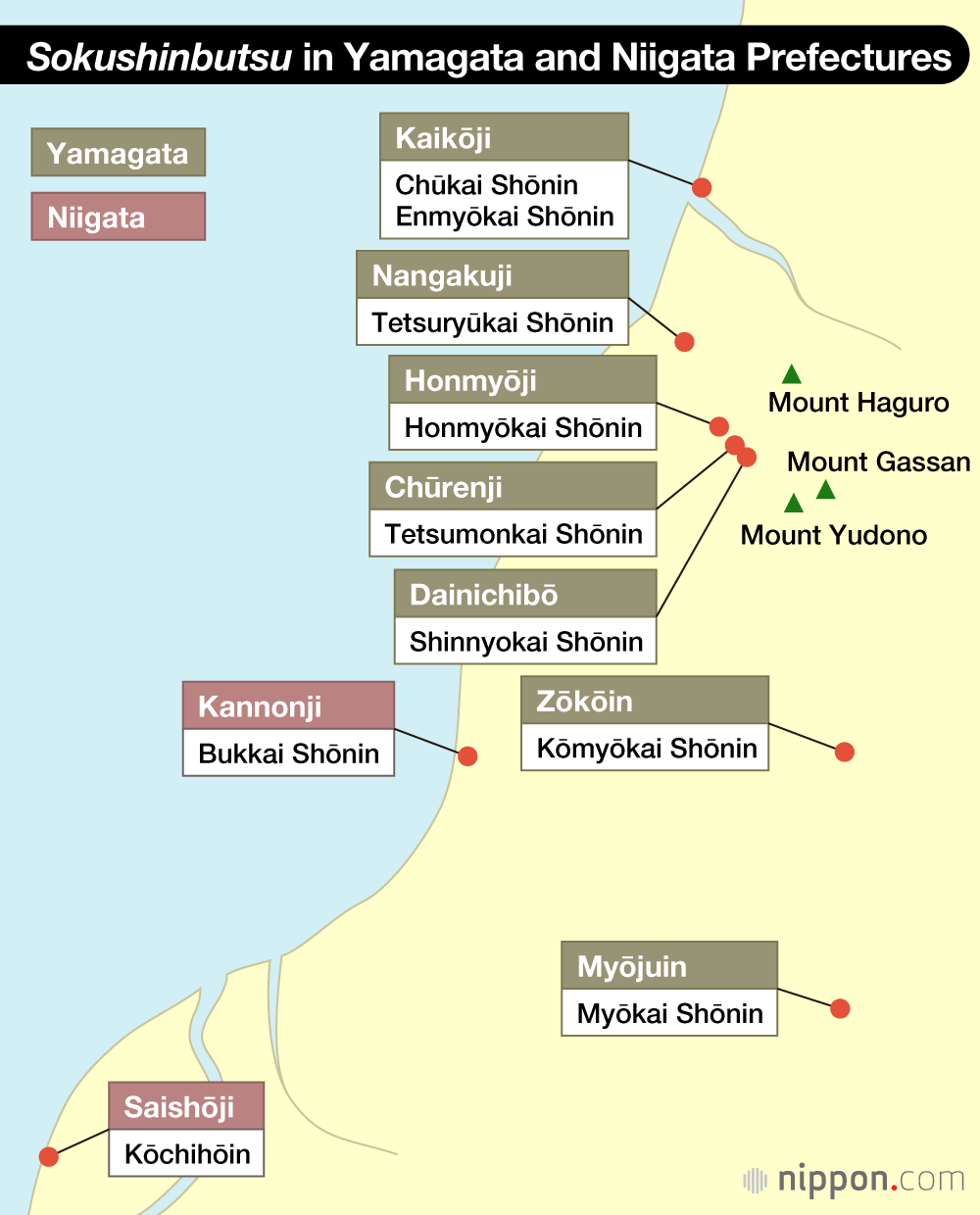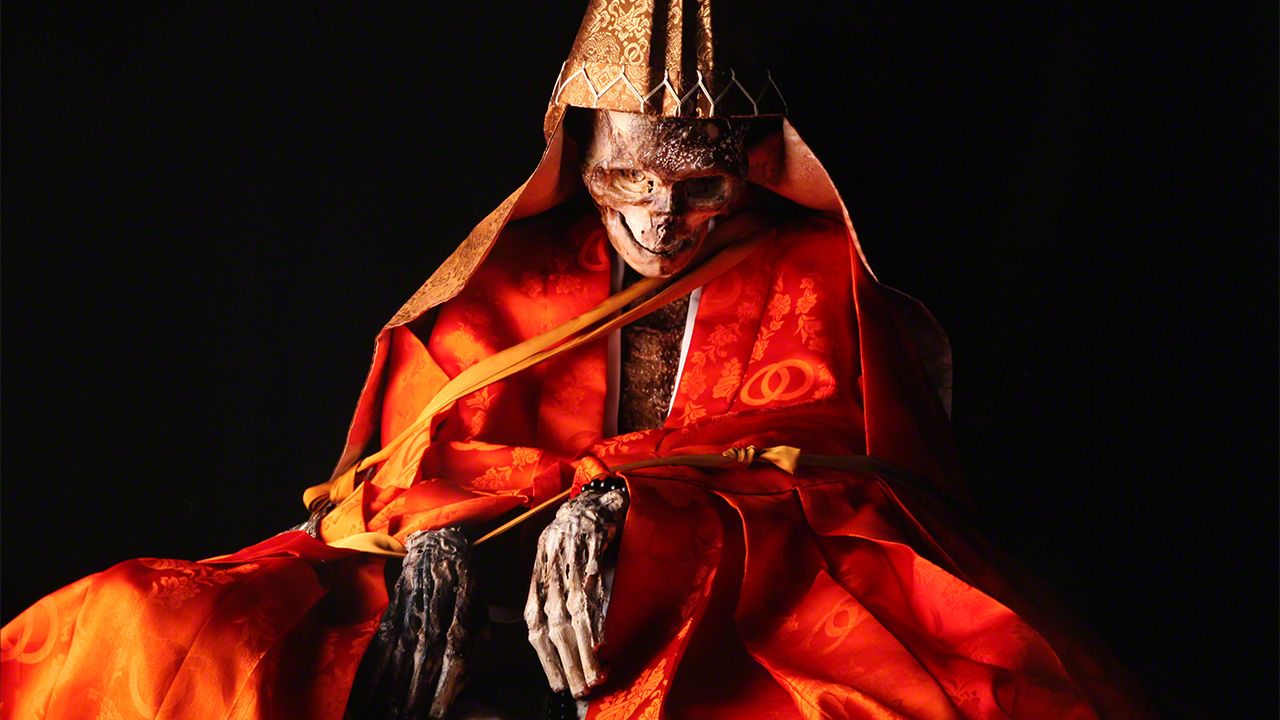
“Sokushinbutsu”: Japan’s Buddhist Mummies
Culture History Travel- English
- 日本語
- 简体字
- 繁體字
- Français
- Español
- العربية
- Русский
Shingon Roots
The worship of sokushinbutsu, the mummified bodies of Buddhist ascetics, dates back centuries in Japan. First arising in the late fourteenth century, the practice continues at a handful of temples, predominantly of the Shingon sect of Buddhism, scattered around Japan.
The macabre custom developed under the influence of the esoteric teachings of Shingon founder Kūkai (774–835). Also known as Kōbō Daishi, Kūkai taught that through rigorous practice, anyone could become a Buddha “in the body”—in the present existence, without aspiring to Buddhahood following rebirth—a concept known as sokushin jōbutsu. The revered priest is said to have achieved this state himself some 1,200 years ago and is believed by followers to reside inside his mausoleum, the Okunoin, at the Kōyasan temple complex in Wakayama Prefecture, where monks continue to bring him daily meals.
There are 18 sokushinbutsu scattered across Japan, with the greatest concentration being around the Dewa Sanzan, the three sacred peaks of Mount Gassan, Mount Yudono, and Mount Haguro in Yamagata Prefecture. The expansive Shōnai region, which stretches from the Dewa summits to the Japan Sea, is home to six mummies, and the Okitama area to the south another two. Neighboring Niigata Prefecture has four sokushinbutsu, while Fukushima, Gifu, Ibaraki, Kanagawa, Kyoto, and Nagano Prefectures each have one.
The Yamagata sokushinbutsu, perhaps because of their numbers, are the best known. A common trait among this group is the inclusion of the kanji character kai (海) in the names of the mummies, honoring Kūkai (空海).
Yamagata’s profusion of mummies is linked to the worship of Mount Yudono, Yudonosan shinkō, that flourished during the Edo period (1603–1868). The Shingon temples in the prefecture that enshrine sokushinbutsu were centers of the faith. Consisting of a mixture of esoteric Buddhist practices and other beliefs, it focused not on Yudono itself, which is not a true mountain, but a dome-like rock, an object of worship held to contain the spirit of a deity in the sacred Senninzawa ravine. The volcanic formation, encrusted with rust-colored minerals deposited by thermal waters flowing from the stone, contrasts starkly with the greenery of the surrounding forest. Imbued with mystical energy, it has served for centuries as the “inner sanctuary” of the Dewa Sanzan peaks.
Until the mid-seventeenth century, the three holy Dewa mountains were associated with an array of religious beliefs. This changed in 1641 when the temples on Mount Haguro shifted their affiliation from Shingon to the Tendai school of Buddhism, in a political move in response to the growing influence of the latter sect under the Tokugawa shogunate. The Shingon faction on Yudono subsequently came under pressure to follow step, but staunchly refused to renounce the teachings of the founder Kūkai. Conflict ensued, eventually forcing the Shingon side to petition the central government for control of the temples and shrines on Mount Yudono. Its request was met, but the Tendai sect claimed both Mount Haguro and Gassan.
Tendai and Shingon, founded in Japan in the early ninth century, are both esoteric traditions, but developed along fundamentally different lines. In contrast to the popular appeal of Tendai, which was on the front lines of Buddhist proselytizing, Shingon remained steeped in its esoteric roots. As strife between the two branches deepened in the Dewa Sanzan region, news of the tensions drew ascetics called issei gyōnin to Shingon-affiliated Mount Yudono. The increasing numbers of these religious figures, most of whom hailed from outside the region, during the Edo period is why so many sokushinbutsu are found in Yamagata today.
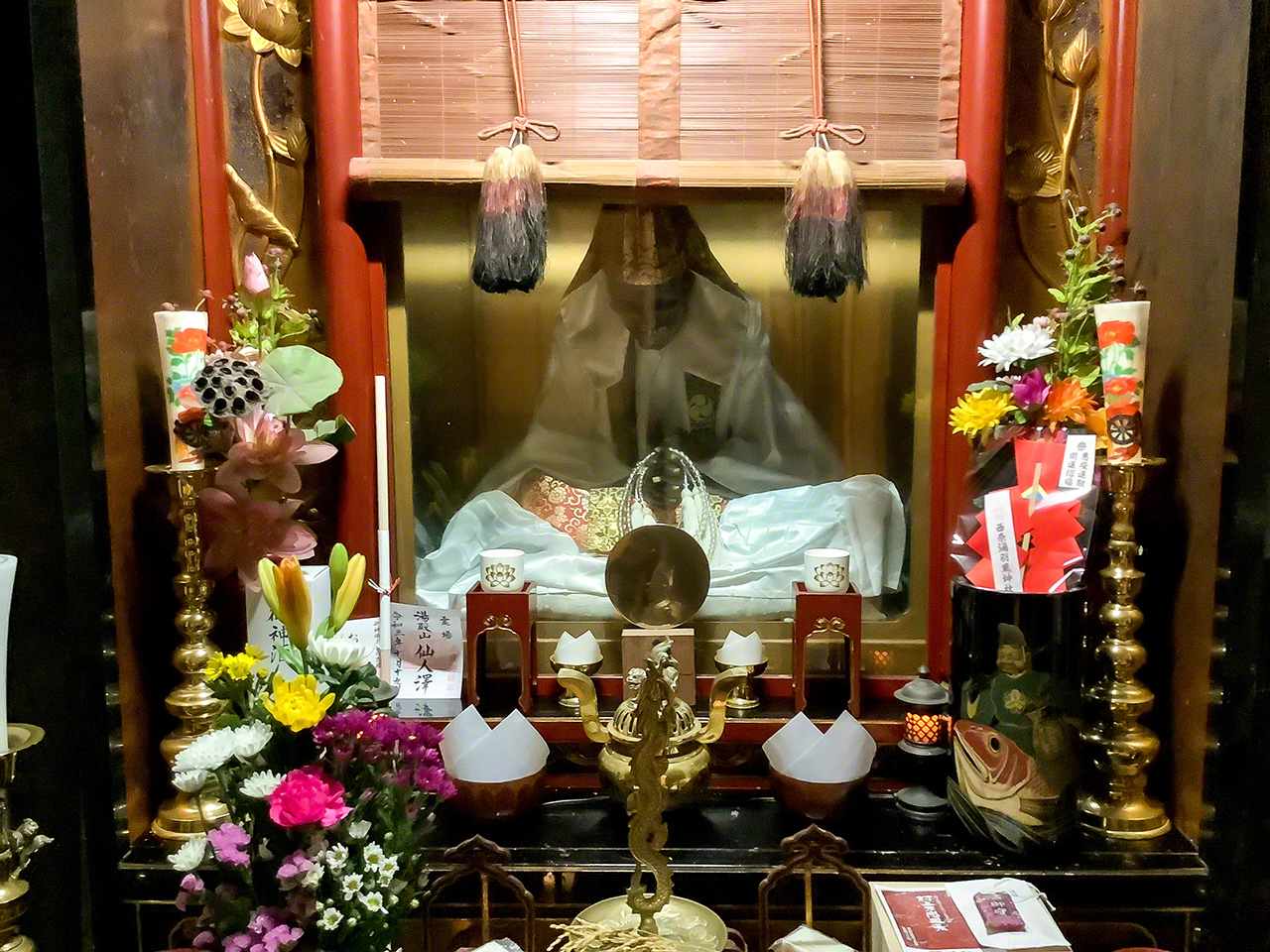
The sokushinbutsu Bukkai Shōnin at the temple Kannonji in Murakami, Niigata Prefecture.
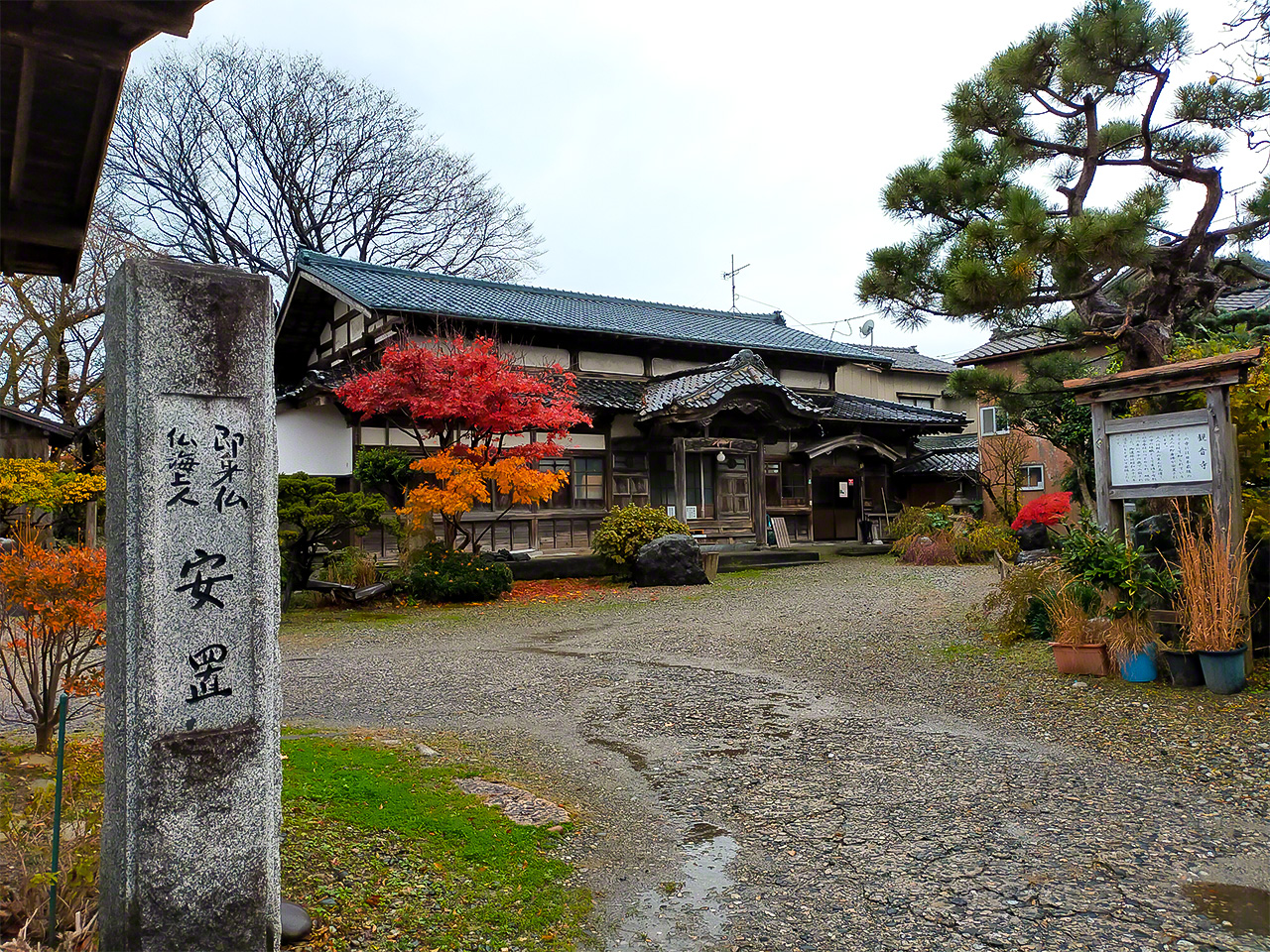
The main hall at Kannonji.
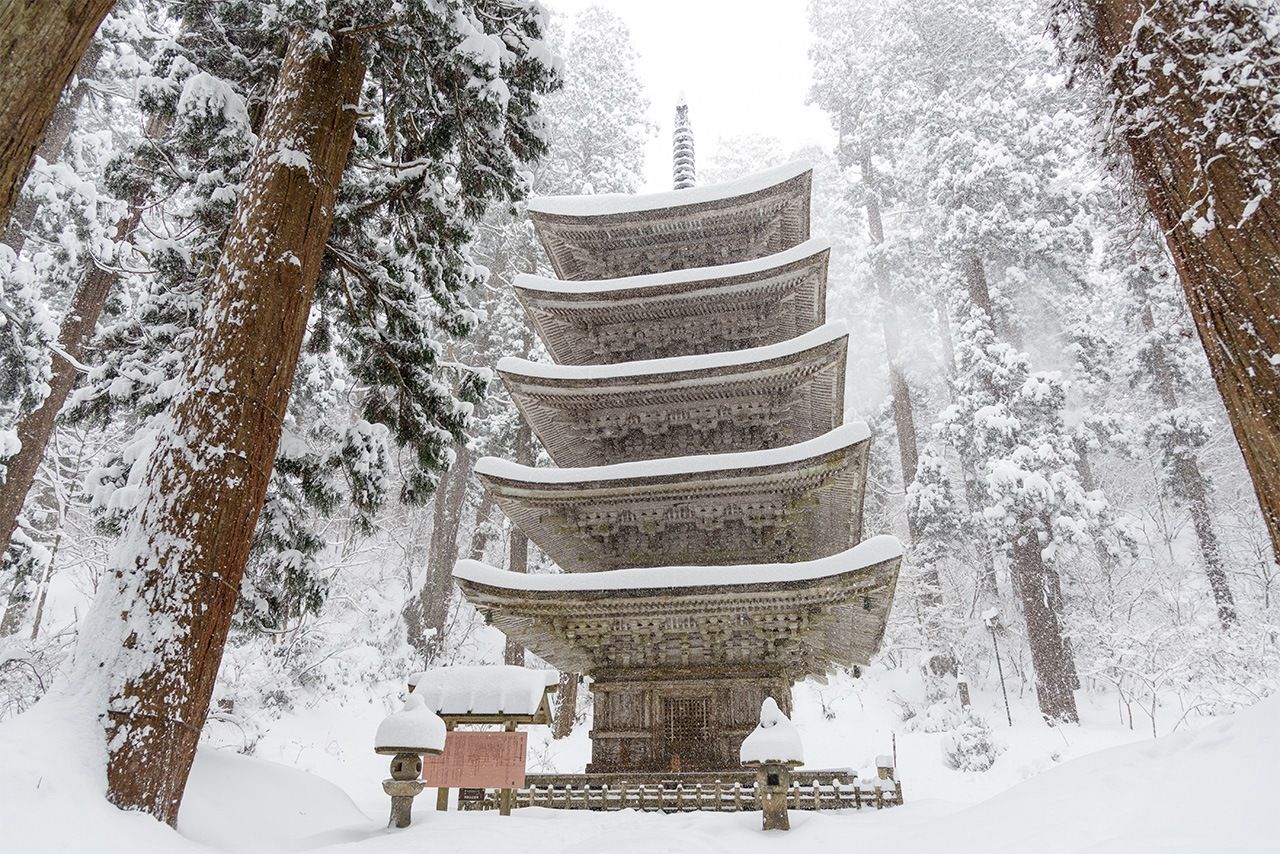
The five-storied pagoda on Tendai-affiliated Mount Haguro. Registered a National Treasure, it is the oldest such structure in the Tōhoku region. (© Pixta)
“Wood Eaters”
The issei gyōnin became one of three groups active on Mount Yudono, alongside the Shingon Buddhist monks and the shugenja followers of Mount Yudono Shingon’s founder, the monk Shōbō (832–909). Although they were religious figures, these issei gyōnin ascetics existed outside the Buddhist monastic hierarchy and also differed from the shugenja, followers of shugendō, in the solitude and the severity of their rituals. The celibate monks, for instance, took disciples as successors, while the married shugenja had their male children succeed them. Issei gyōnin attracted devotees and patrons by performing solitary rites that kept them in the mountains even during the harsh winter months, when monks were holed up in their temples and the shugenja went about the land proselytizing.
According to temple records, issei gyōnin were known to practice mokujiki, or “wood-eating.” They abstained from consuming 10 varieties of cereals, including rice, wheat, soybeans, and millet, sustaining themselves instead on leaves, bark, roots, and other plants from the forest—a diet that was thought to boost their ascetic powers.
The most revered practice, the one earning an issei gyōnin and his devotees great religious merit, was the sennichi yamagomori, a thousand-day seclusion on Mount Yudono. These monumental undertakings have traditionally been characterized as solitary rites in which the issei gyōnin remained secluded in a mountain hut, living off items foraged from the surrounding forest. Edo-period records, however, show that patrons provided offerings like food and clothing to help sustain the issei gyōnin during these demanding endeavors. The ascetics also relied on the thermal waters bubbling from the sacred dome rock to fend off the worst of the winter cold.
The most distinguished of the sennichi yamagomori involved the ascetic committing to being buried alive. In a rite called dochū nyūjō, an issei gyōnin would be placed in a specially constructed subterranean cell to continue his meditations for three years and three months, transforming at death into a sokushinbutsu.
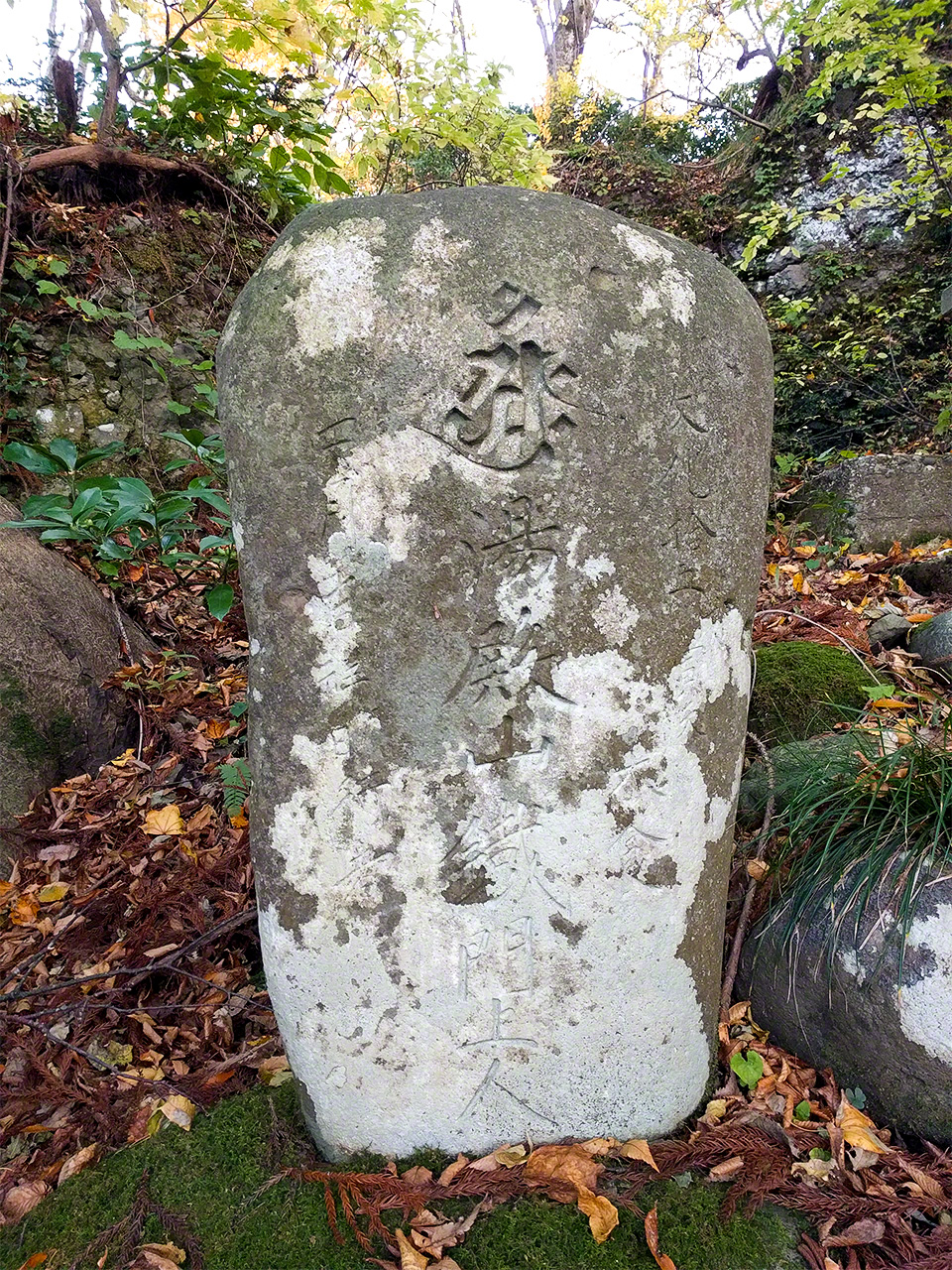
Stone stellae like this one dedicated to Tetsumonkai Shōnin were put up to commemorate an issei gyōnin who had completed a 1,000-day seclusion.
Although tales of the macabre ritual add to the mystique of these mummies, stories of live burials are more folklore than historical fact. The only descriptions of the practice come from uncorroborated oral and written accounts passed down through temples housing sokushinbutsu. Scientific research also casts doubt on the narrative.
A study of sokushinbutsu by the Niigata University School of Medicine in the 1960s determined that mummification took place by artificial means after the death of the individual, rather than occurring naturally while the body was entombed. Researchers noted in their findings that in Japan’s warm, wet climate an interred corpse was unlikely to mummify, as in drier regions like Egypt. Archeological evidence backs up this assertion. Excavations of stone tombs at sites around Japan, for instance, have turned up skeletal remains, but no mummies. These revelations, though, while shedding light on the Yudono ascetics, have not diminished the mystical allure of sokushinbutsu.
Separating Fact and Legend
Of the many issei gyōnin who practiced on Mount Yudono, the most is known about Tetsumonkai Shōnin, the sokushinbutsu enshrined at Chūrenji temple in Tsuruoka. Records describe how he fled to Yudono and devoted his life to Buddhism after killing two samurai during a dispute. At the holy site, he distinguished himself by conducting good deeds, including helping to build roads and establish new rice paddies, acts that garnered him broad support among the local populace. Subsequently uncovered documents have revealed that his religious activities were not limited to Yudono, and that he travelled throughout the north of Japan and even ventured as far as Ezo, today the island of Hokkaidō, winning devotees.
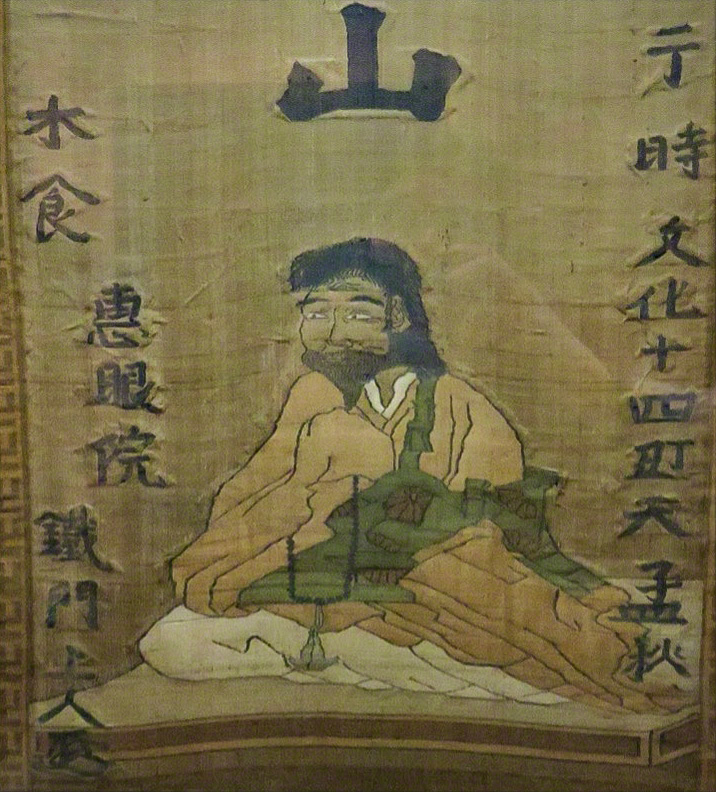
A portrait of Tetsumonkai Shōnin. Issei gyōnin were distinct in that they did not shave their heads like Buddhist monks and shunned the yuigesa sash of the region’s shūgensha Buddhists. (© Sugihara Takeo)
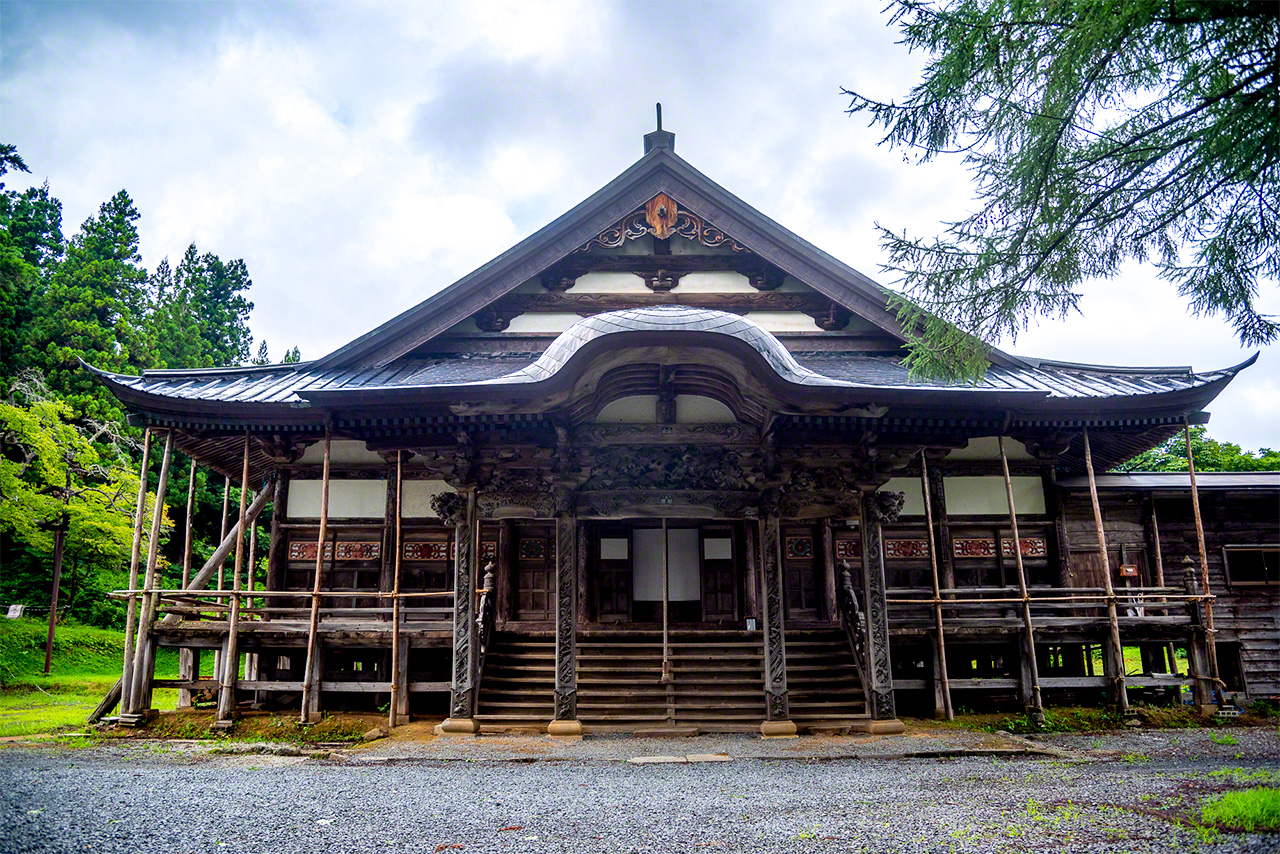
The main hall of Chūrenji. (© DEGAM Tsuruoka Tourism Bureau)
The lives of Dewa’s other issei gyōnin, on the other hand, are largely shrouded in mystery. Earthquakes and fires have destroyed many of the writings and other materials at temples documenting the religious activities of ascetics. That which remains is hard to corroborate, further hindering scholars’ attempts to separate historical fact from folklore. It was long believed, for instance, that issei gyōnin attracted followers through becoming a sokushinbutsu. Stone stellae erected by devotees to commemorate the act of an ascetic becoming a living Buddha dot Mount Yudono, but documents such as registers listing sponsors of different rituals by issei gyōnin often predate these markers, strongly suggesting that the figures played much broader religious roles while alive.
Rising to Fame
The paucity of historical information on Dewa’s sokushinbutsu is also in part due to their relative obscurity during the Edo period. Accounts abound of travelers, including haiku master Matsuo Bashō (1644–94), stopping by Saishōji in the Niigata town of Teradomari to pay respects to Kōchihōin, a venerable mummy from the fourteenth century enshrined there. By comparison, sokushinbutsu are conspicuously absent from travel journals of the Dewa Mountains. One of the few descriptions is by the prolific chronicler Sugae Masumi (1754–1829), who viewed Honmyōkai Shōnin while visiting Honmyōji in Tsuruoka in 1784. Sugae appears to have been unimpressed by the experience, declaring that the sokushinbutsu paled in comparison to the noble Kōchihōin.
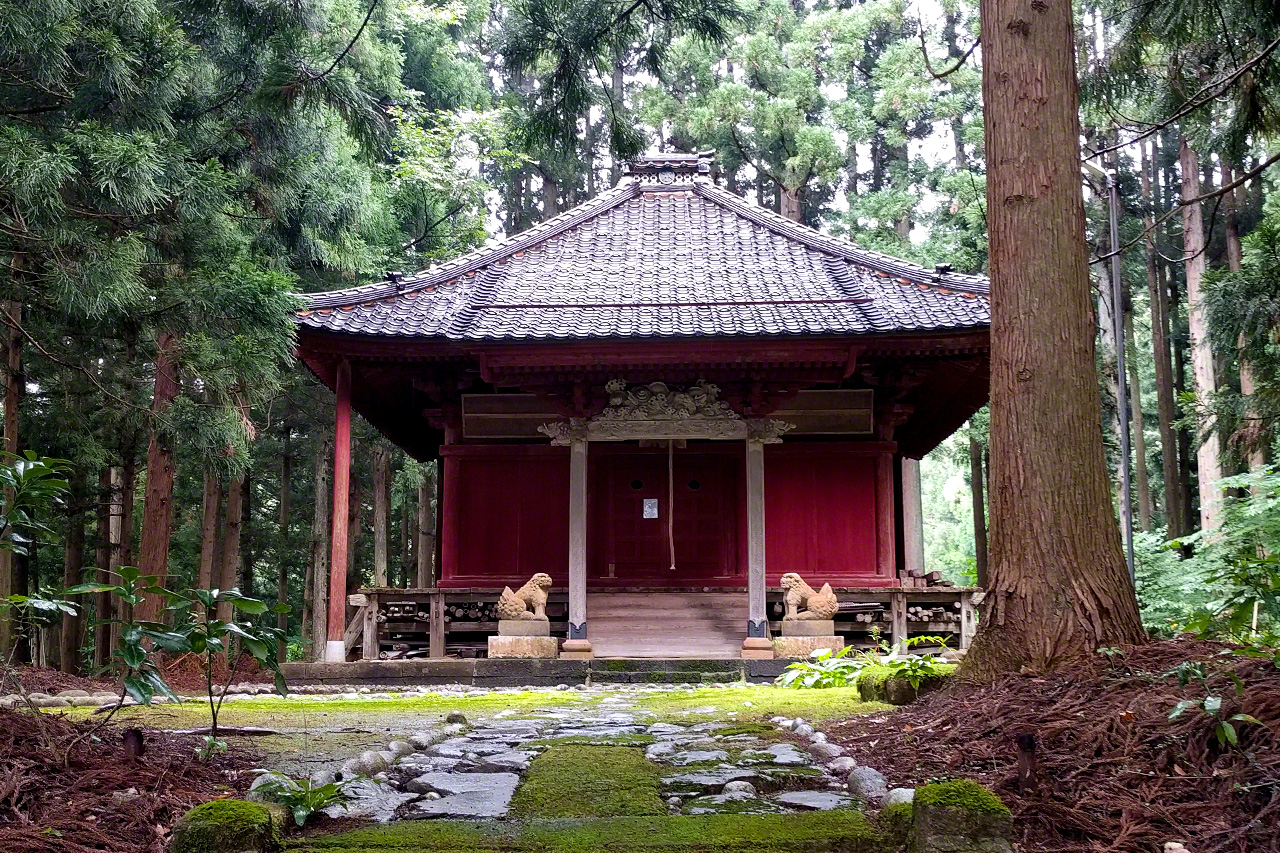
The hall at Honmyōji housing the sokushinbutsu Honmyōkai Shōnin.
The fame of the Dewa mummies, however, grew dramatically following the Meiji Restoration in 1868. The newly established government, in a break from the Buddhist-centered policies of the previous regime, set native Shintō as the state religion. It ordered that the two faiths be separated, including temples and shrines, which frequently occupied the same sites. On the Dewa mountains, this Buddhist-Shintō amalgam was characteristic of temples dedicated to mountain worship faiths, and many changed their affiliation to Shintoism in the wake of the government’s edict.
At the same time, authorities moved to bar issei gyōnin from attempting the sokushinbutsu rite. It passed laws declaring live burial as an act abetting suicide, allowing for the forcible removal of an individual, and declaring the exhumation of a mummy after the traditional period of three years and three months to be grave robbery.
The separation of Shintō and Buddhism had a dire impact on the four Shingon temples at Mount Yudono that worshipped the dome-shaped rock. The temples contended that Yudono was in essence Buddhist, but their pleas fell on deaf ears. Two of the institutes, Chūrenji and Dainichibō, refused to bow to the state and retained their Shingon affiliation, at considerable cost. Authorities stripped the temples of their rights to conduct religious rituals and revoked their roles, dating back to the Edo period, as gateways for worshippers visiting the Dewa Sanzan peaks.
Deprived of their main sources of revenue, the temples turned to sokushinbutsu. Enshrining the mummies as principal images, priests poured their energies into building a following, including proselytizing and selling religious talismans. As word of the sokushinbutsu spread, the number of worshippers grew, guaranteeing the temples a steady income.
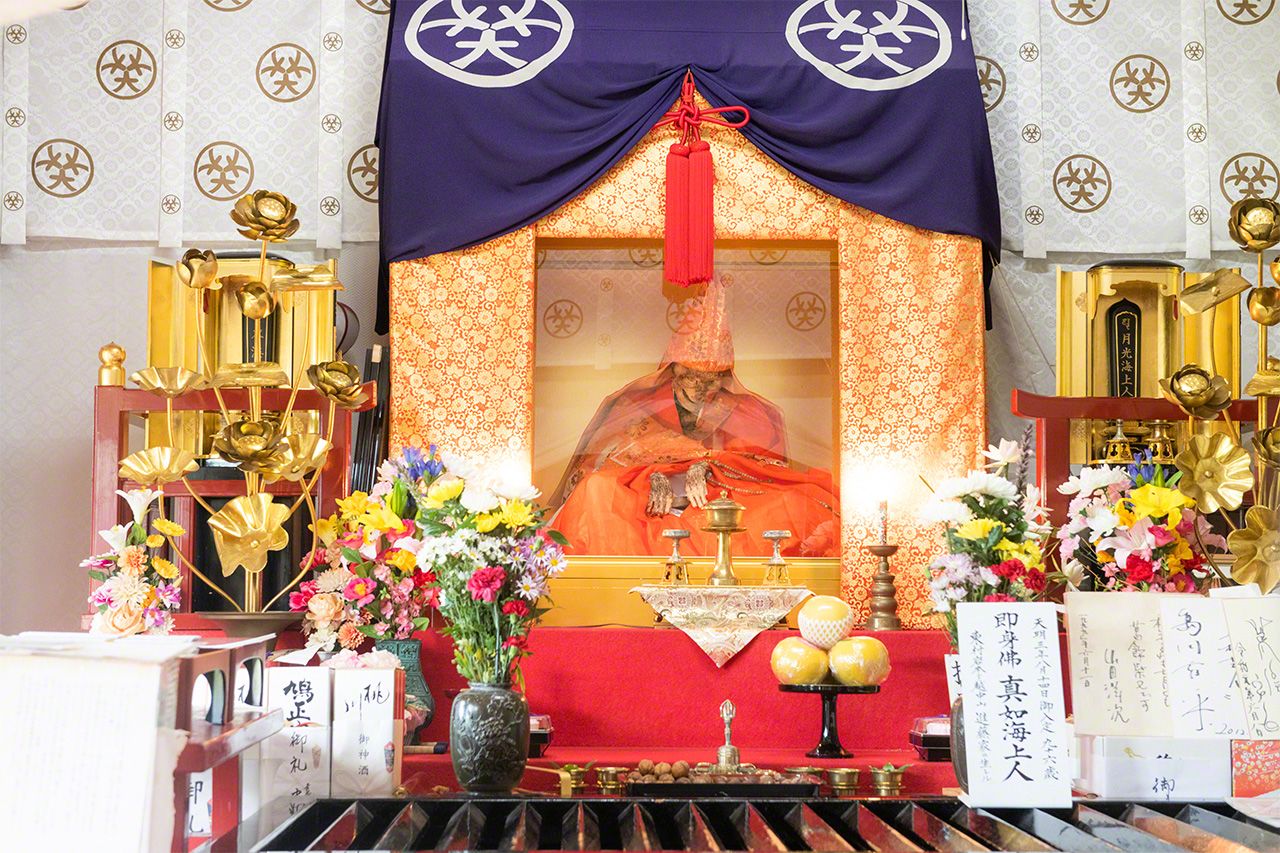
Shinnyokai Shōnin, the sokushinbutsu of Dainichibō. (© DEGAM Tsuruoka Tourism Bureau)
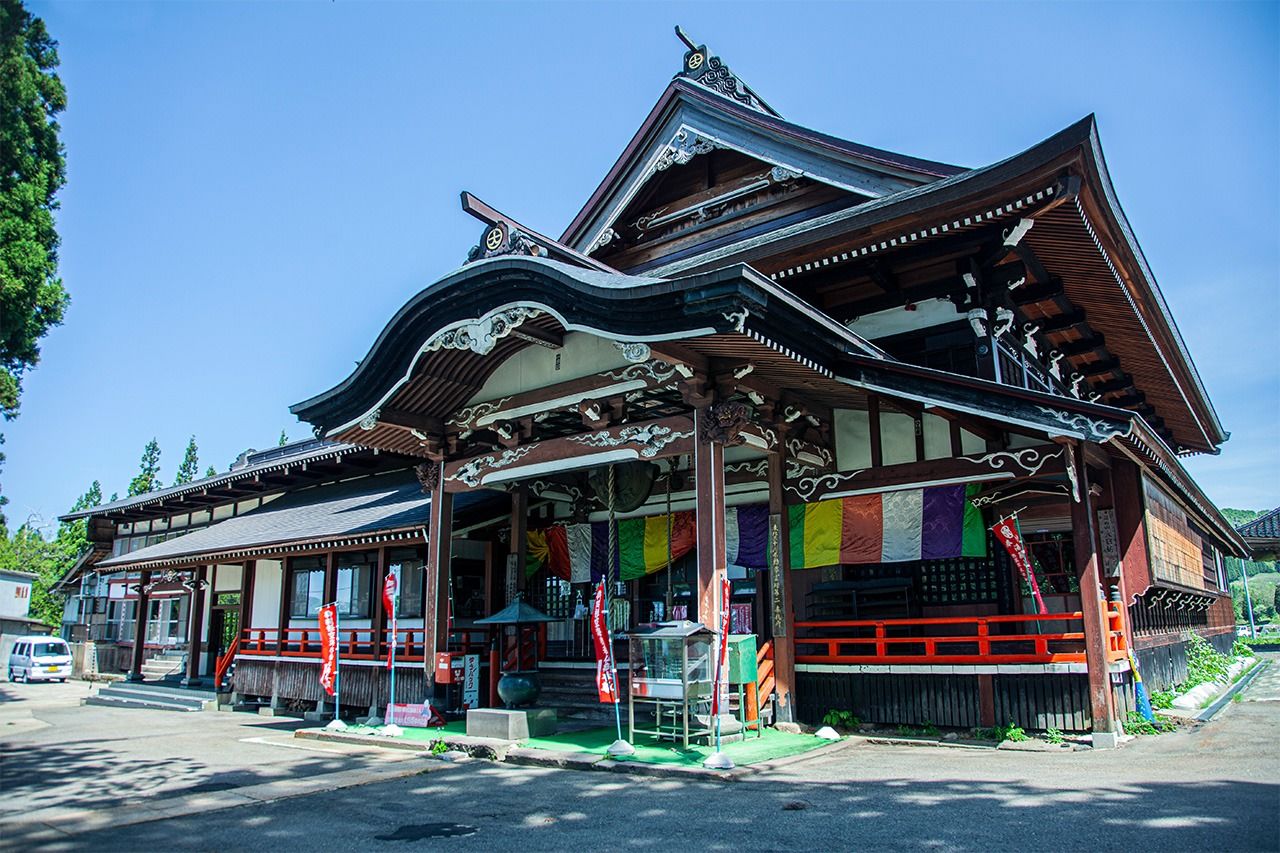
The main hall of Dainichibō. (© Pixta)
Preservation Challenges
While revered for their religious importance, sokushinbutsu share an uncertain future. Legally classified as human remains, they are not awarded the same protections given to statues or other historically significant Buddhist images. The mummies are not eligible for registration as important cultural properties, and rites like changing of robes that take place every 6 or 12 years are esoteric rituals closed to the public, making it unlikely that the ceremonies can attain status as intangible cultural assets. This prevents the temples from tapping into funds provided by the national and local governments for preservation of historic artifacts, forcing the institutes themselves to foot the costly bill of maintaining the mummies.
The best approach for preserving sokushinbutsu is to encourage the public to visit the temples where mummies are enshrined to learn about the lives and religious works of the issei gyōnin. Although many of the locations are in remote areas, local governments can provide support for taxis and buses to ferry visitors to and from temples, along with other efforts to boost traffic to sites. By working together, local communities can ensure that the Dewa sokushinbutsu will remain part of Yamagata’s cultural heritage for generations to come.
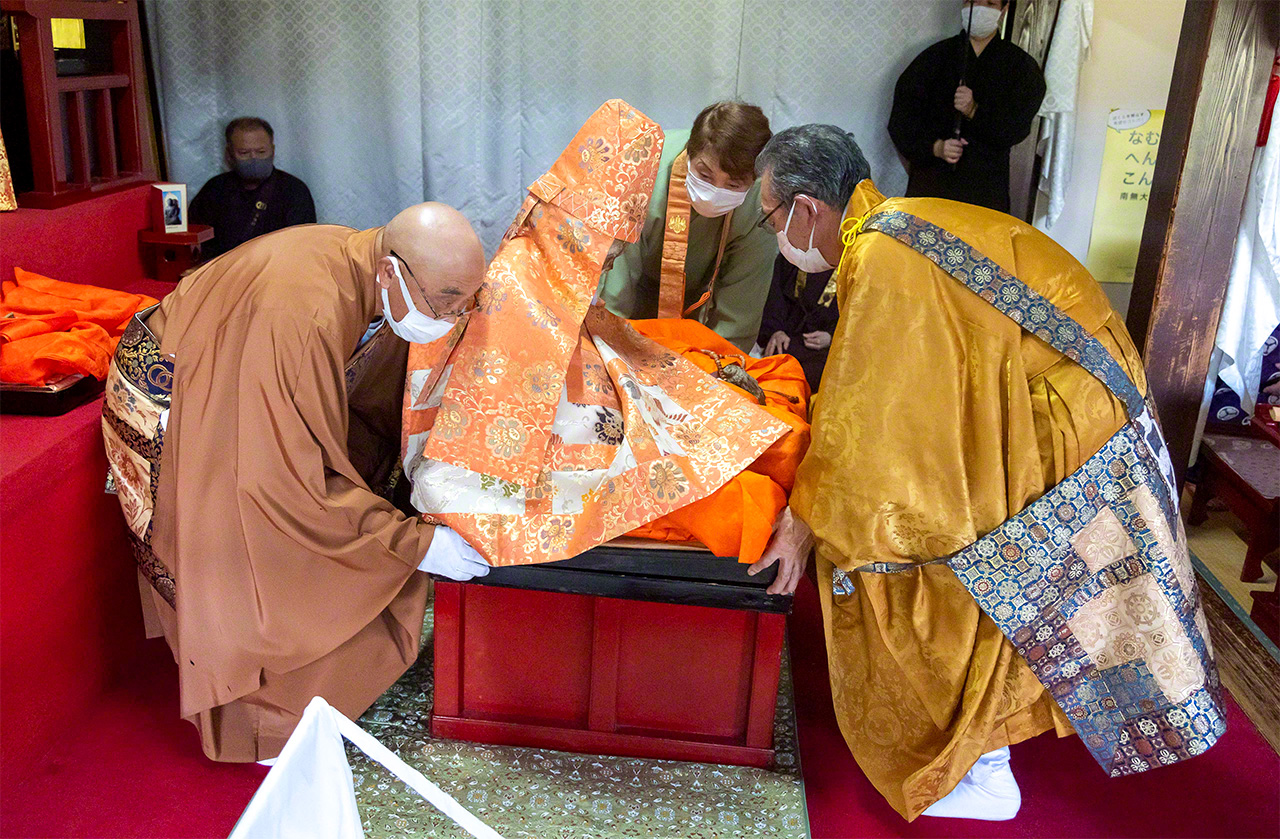
Priests at Dainichibō change the robes of sokushinbutsu Shinnyokai Shōnin. The ceremony takes place every year of the ox, according to the 12-year zodiac cycle. The old garments are cut up and given to people in attendance as talismans. (© DEGAM Tsuruoka Tourism Bureau)
(Originally published in Japanese. Banner photo: The sokushinbutsu Shinnyokai Shōnin, enshrined at Dainichibō. © Dainichibō. All photos by the author, unless otherwise noted.)
